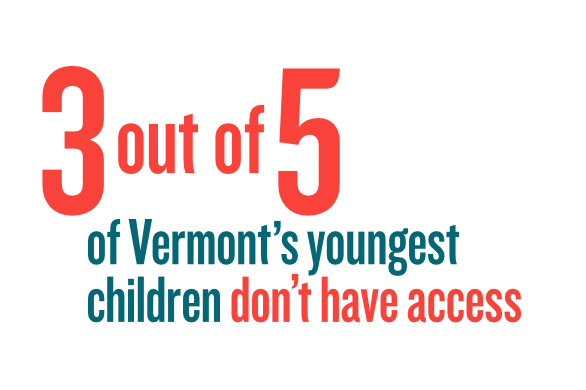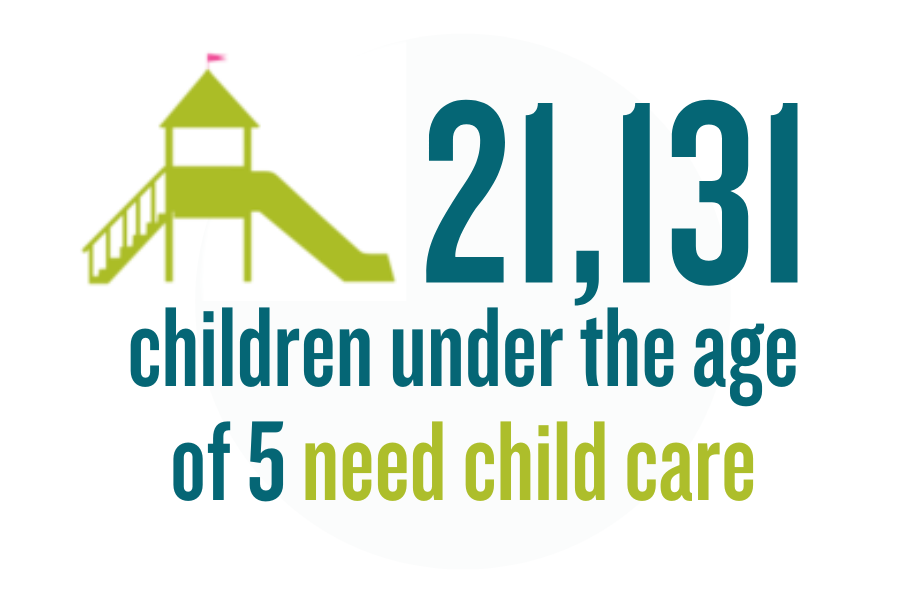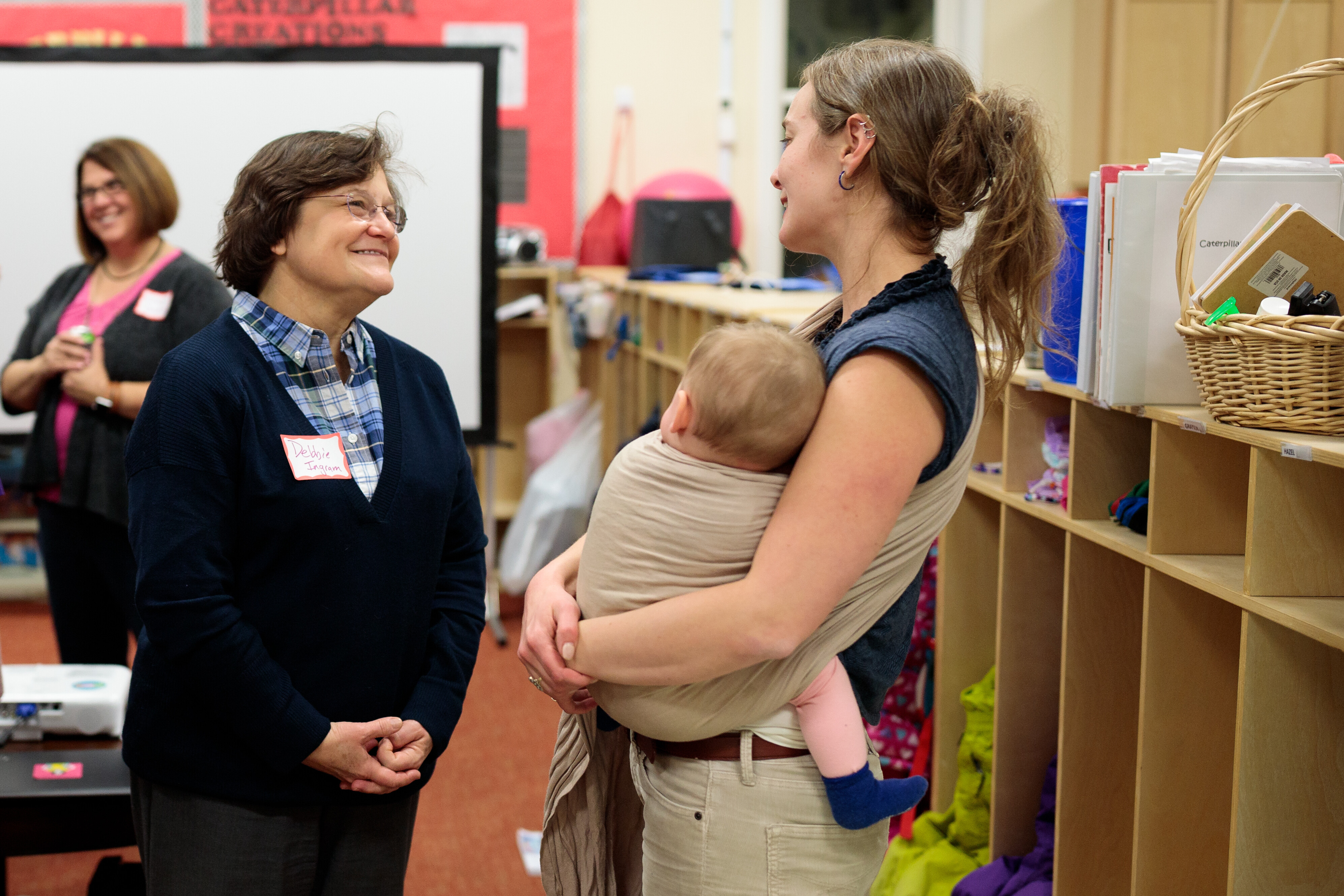
And Why It Matters
Not only is high-quality child care essential to the healthy development of our youngest children, but to our ability to thrive as a state, to broaden the tax base, maintain the stable workforce businesses need, and support economic stability and growth. Without access to affordable child care, Vermont will continue to be an unaffordable place to live, work, and raise a family, and our economy will continue to decline.
See how the child care crisis is impacting your community.
When supply can't meet demand...

Full-day, full-year child care programs in Vermont only have about 12,380 spaces available for infants, toddlers, and preschoolers and of those spaces, only 8,090 are high-quality according to the state’s STARs quality recognition program. If you look at just infants likely to need care, 61% don't have access to any regulated program.

The US Census Bureau estimates that approximately 72.8% of Vermont children under age 6 have all available parents in the labor force, meaning that they're likely to need some form of child care while a parent is working. This means that approximately 21,131 children under the age of 5 in Vermont are likely to need some form of child care.
...and the math doesn't add up

Vermont families are struggling to pay for child care. Middle-income families with two parents and two young children are spending more than 30% of their income on child care. Right now, the average cost of child care for a Vermont family with two young children is over $26,000 a year—more than the cost of full-time, in-state tuition at Vermont State University. As a result, parents are forced to make tough choices like leaving jobs or taking on extra work in order to pay for child care.

While parents can’t afford to pay more, early childhood educators can't afford to earn less. The median annual wage for a center-based child care program teacher in Vermont is only $39,315—often without benefits. This is LESS than what Vermont’s Joint Fiscal Office says is a livable annual income. Without a livable wage, early educators can’t afford to stay in the field.
...we are all impacted.


Vermont’s workforce and economy suffer.
Vermont’s labor force shrank to its lowest size in nearly 30 years in 2021 and employers of every industry cite a lack of affordable, quality child care as one of their biggest recruiting challenges. Our ability to thrive as a state, broaden the tax base, and maintain the workforce our businesses need to succeed, relies on retaining and recruiting families to live in Vermont. Without access to affordable child care, Vermont will continue to be an unaffordable place to live and raise a family.


Vermont families can't make ends meet.
When families are able to find child care, many are spending more than 30% of their income on child care, even with financial assistance. This financial burden dramatically impacts families’ decisions to grow their families, participate in the workforce, and even stay in Vermont.


The early years are essential to ALL children.
From birth to age five, children’s brains are developing rapidly, forming over 1 million new neural connections every second, establishing the social, emotional, and academic foundation they will build upon over the course of their lives. The early years happen only once and are particularly vital to closing the opportunity gaps for Black and Indigenous children of color. Ensuring that Black and Indigenous children of color, who represent more than 10% of the total population of children 0-5 in Vermont, have access to the high-quality early education opportunities that meet their needs and the needs of their families is an important step towards a more equitable and inclusive society


Early childhood educators struggle to make a living.
Child care workers are so dramatically undervalued and underpaid, their compensation ranks in the bottom 2% of all occupations nationwide and of all college graduates, early childhood educators earn the least, nationwide. Without appropriate compensation and benefits, early educators can’t afford to stay in the field and continue their essential work, child care programs are unable to attract and retain qualified staff, and Vermont’s kids and families don’t have access to the care they need.
But we ARE making progress...
We are accomplishing our mission through a four-pronged approach: strengthening early childhood education, building a movement, catalyzing policy change and grounding our work through research. We have brought together thousands of Vermonters who are calling for change as well as making the change in their local communities.
...and here's how you can help.

JOIN US
Take the first step! Sign on to Vermont's Child Care Campaign and become a champion for Vermont's children.

CONTACT YOUR LAWMAKERS
Make sure your elected officials know child care is a top priority for Vermonters.

TAKE ACTION
Join us for an event or volunteer opportunity. No matter how you get involved, you are taking part in Vermont’s Child Care Campaign!